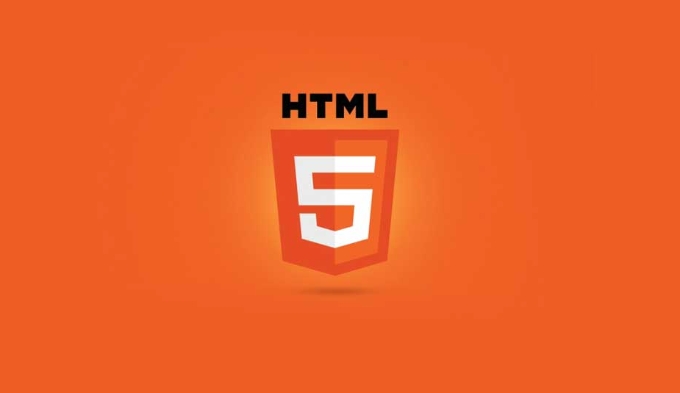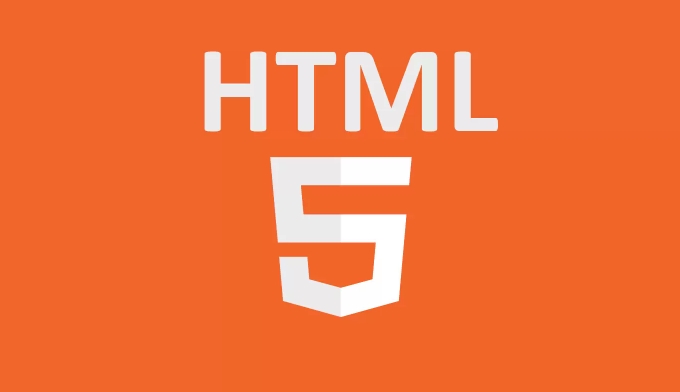What are the new input types available in HTML5 forms?
Jul 12, 2025 am 03:07 AMHTML5 introduced new input types that enhance form functionality and user experience by improving validation, UI, and mobile keyboard layouts. 1. email validates email addresses and supports multiple entries. 2. url checks for valid web addresses and triggers URL-optimized keyboards. 3. number allows numeric input with increment/decrement controls and range restrictions. 4. range provides a slider for selecting values within a defined range. 5. date, time, and related types offer built-in pickers for easier date and time entry. 6. search enhances search fields with features like auto-complete. These inputs streamline development and improve usability while gracefully degrading in older browsers, making them valuable when paired with server-side validation.

HTML5 introduced several new input types that enhance the functionality and user experience of web forms. These input types provide better validation, improved user interfaces on supporting browsers, and more appropriate keyboard layouts on mobile devices.

1. email – For Email Address Input
The email input type is used when you want the user to enter an email address. Browsers that support this input type automatically validate that the entered text matches a basic email format (e.g., user@example.com).
Example:

<input type="email" name="user_email" placeholder="you@example.com">
- You can use the
multipleattribute to allow multiple email addresses separated by commas. - It’s especially useful in sign-up or contact forms where valid email addresses are required.
2. url – For Web Address Input
The url input type expects a valid URL from the user. The browser checks whether the value starts with a valid protocol like http:// or https://.
Example:

<input type="url" name="website" placeholder="https://example.com">
- On mobile devices, this often triggers a keyboard optimized for entering URLs.
- Make sure to handle additional validation server-side since browsers only perform basic checks.
3. number – For Numeric Input
Use number when you want users to enter a number. This input type allows up/down arrows for incrementing and decrementing values and restricts input to numbers on many devices.
Example:
<input type="number" name="quantity" min="1" max="10" step="1">
You can control behavior using attributes:
minandmaxset limitsstepdefines how much the value increases or decreases
4. range – For Slider Inputs
The range input lets users pick a value from a range using a slider. It's great for settings like volume, brightness, or ratings.
Example:
<input type="range" name="volume" min="0" max="100" step="5">
- Users don’t always know the exact value they’re choosing, so it’s best used when precision isn't critical.
- Pair it with a visual indicator or label if showing the current value is important.
5. date, time, datetime-local, month, and week – For Date and Time Inputs
These inputs simplify date and time entry by offering built-in pickers:
date: selects a full date (YYYY-MM-DD)time: picks a time (HH:MM)datetime-local: combines date and time without timezonemonth: selects a month and yearweek: selects a week and year
Examples:
<input type="date" name="birthday"> <input type="time" name="meeting_time">
- Browser support varies, so always test across platforms.
- These inputs make data entry easier and reduce formatting errors.
6. search – For Search Field Input
Designed specifically for search boxes, search behaves similarly to text but may be styled differently or offer features like auto-complete and a clear button on some browsers.
Example:
<input type="search" name="query" placeholder="Search...">
- It improves usability in search forms by leveraging native UI enhancements.
- Works well in site navigation bars and app toolbars.
These input types help developers build smarter, more intuitive forms with less JavaScript. While not all browsers support every type equally, using them gracefully degrades to text in older environments. So, basically, they're worth using today — just back them up with server-side validation.
The above is the detailed content of What are the new input types available in HTML5 forms?. For more information, please follow other related articles on the PHP Chinese website!

Hot AI Tools

Undress AI Tool
Undress images for free

Undresser.AI Undress
AI-powered app for creating realistic nude photos

AI Clothes Remover
Online AI tool for removing clothes from photos.

Clothoff.io
AI clothes remover

Video Face Swap
Swap faces in any video effortlessly with our completely free AI face swap tool!

Hot Article

Hot Tools

Notepad++7.3.1
Easy-to-use and free code editor

SublimeText3 Chinese version
Chinese version, very easy to use

Zend Studio 13.0.1
Powerful PHP integrated development environment

Dreamweaver CS6
Visual web development tools

SublimeText3 Mac version
God-level code editing software (SublimeText3)

Hot Topics
 1794
1794
 16
16
 1740
1740
 56
56
 1591
1591
 29
29
 1473
1473
 72
72
 267
267
 587
587
 Significant Goals of HTML5: Enhancing Web Development and User Experience
May 14, 2025 am 12:18 AM
Significant Goals of HTML5: Enhancing Web Development and User Experience
May 14, 2025 am 12:18 AM
HTML5aimstoenhancewebdevelopmentanduserexperiencethroughsemanticstructure,multimediaintegration,andperformanceimprovements.1)Semanticelementslike,,,andimprovereadabilityandaccessibility.2)andtagsallowseamlessmultimediaembeddingwithoutplugins.3)Featur
 What is Microdata? HTML5 Explained
Jun 10, 2025 am 12:09 AM
What is Microdata? HTML5 Explained
Jun 10, 2025 am 12:09 AM
MicrodataenhancesSEOandcontentdisplayinsearchresultsbyembeddingstructureddataintoHTML.1)Useitemscope,itemtype,anditempropattributestoaddsemanticmeaning.2)ApplyMicrodatatokeycontentlikebooksorproductsforrichsnippets.3)BalanceusagetoavoidclutteringHTML
 HTML5: Goals in 2024
May 13, 2025 am 12:13 AM
HTML5: Goals in 2024
May 13, 2025 am 12:13 AM
HTML5'sgoalsin2024focusonrefinementandoptimization,notnewfeatures.1)Enhanceperformanceandefficiencythroughoptimizedrendering.2)Improveaccessibilitywithrefinedattributesandelements.3)Addresssecurityconcerns,particularlyXSS,withwiderCSPadoption.4)Ensur
 The Aims of HTML5: Creating a More Powerful and Accessible Web
May 14, 2025 am 12:18 AM
The Aims of HTML5: Creating a More Powerful and Accessible Web
May 14, 2025 am 12:18 AM
HTML5aimstoenhancewebcapabilities,makingitmoredynamic,interactive,andaccessible.1)Itsupportsmultimediaelementslikeand,eliminatingtheneedforplugins.2)Semanticelementsimproveaccessibilityandcodereadability.3)Featureslikeenablepowerful,responsivewebappl
 HTML5 Microdata: The best online tools
Jun 09, 2025 am 12:06 AM
HTML5 Microdata: The best online tools
Jun 09, 2025 am 12:06 AM
ThebestonlinetoolsforHTML5MicrodataareGoogleStructuredDataMarkupHelperandSchema.org'sMarkupValidator.1)GoogleStructuredDataMarkupHelperisuser-friendly,guidinguserstoaddMicrodatatagsforenhancedSEO.2)Schema.org'sMarkupValidatorchecksMicrodataimplementa
 Microdata in HTML5: The Key to Better Search Engine Ranking
Jun 12, 2025 am 10:22 AM
Microdata in HTML5: The Key to Better Search Engine Ranking
Jun 12, 2025 am 10:22 AM
MicrodatasignificantlyimprovesSEObyenhancingsearchengineunderstandingandrankingofwebpages.1)ItaddssemanticmeaningtoHTML,aidingbetterindexing.2)Itenablesrichsnippets,increasingclick-throughrates.3)UsecorrectSchema.orgvocabularyandkeepitupdated.4)Valid
 HTML5 goals: A quick start guide
May 18, 2025 am 12:18 AM
HTML5 goals: A quick start guide
May 18, 2025 am 12:18 AM
HTML5aimstoimprovewebaccessibility,efficiency,andinteractivityforbothusersanddevelopers.1)Itreducestheneedforexternalpluginsbysupportingnativemultimedia.2)Itenhancessemanticstructurewithnewelements,improvingSEOandcodereadability.3)Itimprovesformhandl
 HTML5 Specification: Exploring the Key Goals and Motivations
May 16, 2025 am 12:19 AM
HTML5 Specification: Exploring the Key Goals and Motivations
May 16, 2025 am 12:19 AM
ThekeygoalsandmotivationsbehindHTML5weretoenhancesemanticstructure,improvemultimediasupport,andensurebetterperformanceandcompatibilityacrossdevices,drivenbytheneedtoaddressHTML4'slimitationsandmeetmodernwebdemands.1)HTML5aimedtoimprovesemanticstructu




